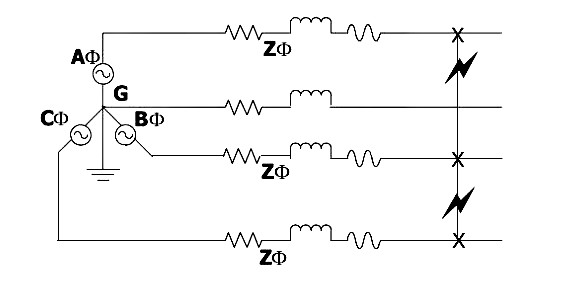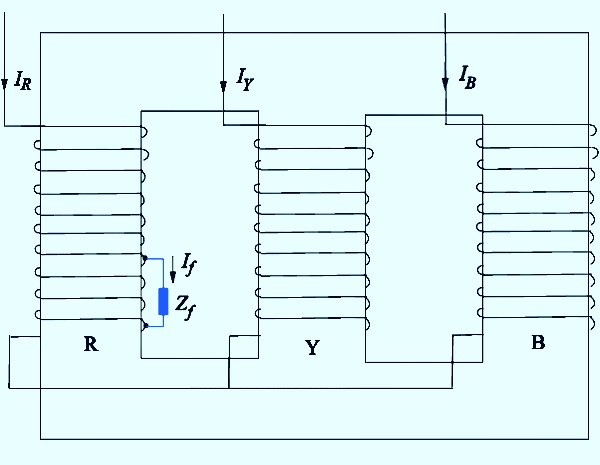Transformer Faults
There are many faults can occur in power transformer which is mentioned below:
- 1.Over heating of the core
- 2.Improper contacts on the tap changer
- 3.Failure of the cooling system
- 4.Phase to phase fault
- 5.Earth fault
- 6.Inter turn fault
- 7.Over load
- 8.Over voltage
The effect of all Faults is described below:
1. Over heating of the core
Transformer core gets over heated due to excessive loading, failure of the cooling system
or fault in the core. e.g. shorting of lamination.
Due to this, the life of the insulation
is reduced and so the life of transformer is reduced.
2. Improper contacts on the tap changer
Arcing occurs and the insulation is damaged when the contacts of the tap changer are not proper.
3. Failure of the cooling system
Cooling is affected when cooling fan stops working or there is fault in the circulating system.
Due to this the temperature of the core and winding increase which affects the insulator.
There is possibility of explosion or fire.
4. Phase to phase fault
 |
| Phase to Phase Fault in Transformer |
5. Earth fault
6. Inter turn fault
The phase to phase fault, earth fault and inter turn fault can result due to the defect in insulation.
Excessive current flows due to this fault and further damage results. Possibility of inter turn fault is less.
If sorme turns of the same winding are shorted, the current increases and heating also increases.This causes unbalanced loading also.
7. Over load
Rate of heating increases when the load on transformer increases.So the winding and its
insulation is damaged.
8. Over voltage
Insulation gets punctured due to over voltage caused by surges. Due to this other faults
can result.




really it is very good and very informative for us and it is to help more of people so you write an article for us and we will read that article really it is very very very very good keep it up
ReplyDeleteI try to write more article better than the this article so all can easily understand..
ReplyDeleteThank you
ReplyDeleteThank you
ReplyDeleteThank you sir for your beautiful topic
ReplyDeleteUseful info
ReplyDelete